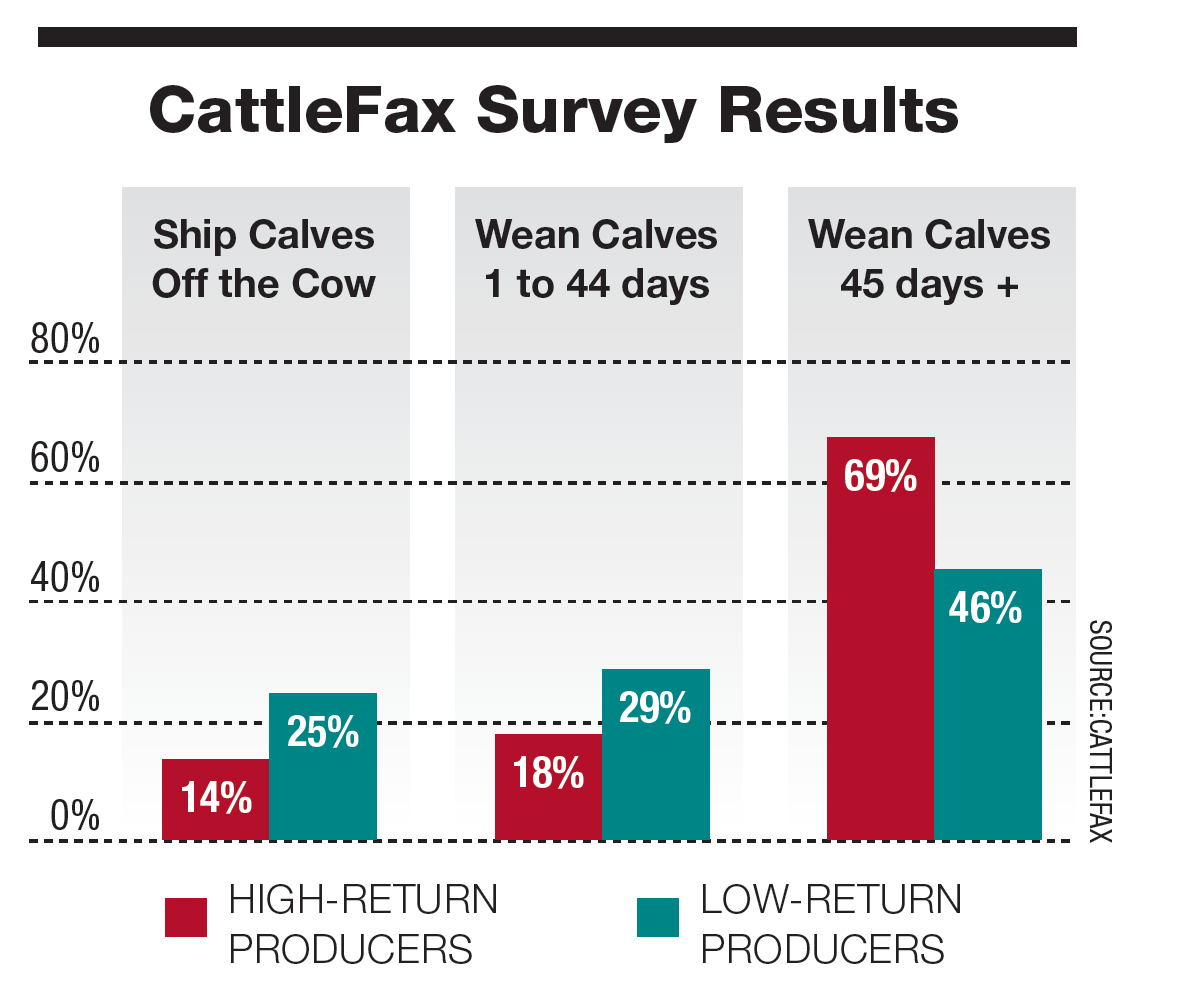High-Profit Producers Wean Their Calves Longer

There’s no doubt about it, the market favors weaned calves. Even more than that, it favors long-weaned calves, and offers a financial reward to producers who execute a 45 to 60 day weaning period (or longer), before their calves are marketed. Recent data from CattleFax illustrates that high-return (high-profit) producers are more likely to wean their calves and are more likely to do so for a longer time. Conversely, low-return producers more frequently sell their calves straight off the cow or wean for a shorter number of days.
Give CattleFax credit for compiling this data. It might be the first time cow-calf profitability and weaning practices have been so clearly linked. We can surmise there’s a two-way, cause-and-effect situation in play here. High-return producers generally have a better understanding of what the marketplace desires, and they’re more willing to align their actions with that knowledge, which builds their bottom line and helps keeps them in the high-return category.

Low-return producers might not grasp the importance of weaning as well, and they are also unable and/or unwilling to do as much about it to meet market demands. Such behavior might tend to keep them in the low profit group.
In considering where this is headed in the future, it seems likely that the price spread between weaned and non-weaned calves will continue to widen. Fewer and fewer backgrounders and feedlots have either the patience or the labor force to babysit non-weaned calves. They increasingly operate with a “risk mitigation” mindset. Anything that adds risk is out, while things that have the potential to reduce risk tend to get a second look.
Weaning calves for 45 to 60 days, or longer, is something our industry needs to help facilitate in every manner possible. For seedstock producers, there might be an opportunity wrapped up in the message portrayed by this data. Breeders that can creatively assist their bull customers in weaning their calves will be helping them align with what the calf market wants. It might take some thought to determine just how helping a commercial customer in this way can be accomplished. However, it’s clear long-weaned calves are favored among buyers and cattle feeders, which makes this concept worthy of consideration. Taking an active role in supporting the success of bull customers is always valuable in any form. It builds loyalty and keeps them coming back to buy more bulls.
Tom Brink is the CEO of Red Angus Association of America.







